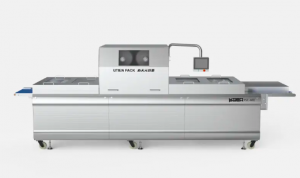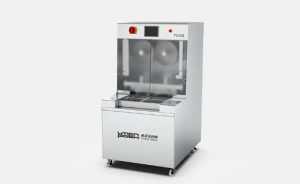When it comes to packaging, ensuring product integrity and freshness is paramount. This is where tray sealers come into play. Tray sealers are a versatile packaging solution used in various industries including food and beverage, healthcare and cosmetics. Whether you need a semi-automatic traysealer or a continuous automatic traysealer, this blog will guide you through the process of selecting the right one for your packaging needs.
Learn about tray sealers:
Tray sealing machines are machines designed to seal trays with heat sealing film or lids. The sealing process creates an airtight barrier around the product, preserving its freshness and keeping it safe from outside contaminants. These sealers can accommodate a variety of tray sizes and materials such as plastic, aluminum or cardboard.
Semi-automatic tray sealer:
The semi-automatic traysealer is ideal for small to medium production. These machines require manual loading, placing the trays on the machine's platform, and initiating the sealing process. The semi-automatic tray sealer is user friendly and offers flexibility in tray size and sealing options. They are ideal for businesses with frequent product changes or limited volumes.
Continuous Automatic Traysealer:
For high-volume production and continuous packaging needs, continuous automatic traysealers are the preferred solution. Designed for efficiency, these machines provide automated pallet loading, sealing and unloading processes. Continuous automatic traysealers are ideal for businesses that need to streamline their packaging operations, allowing for higher throughput while reducing labor costs. They provide consistent seal quality and can handle large pallets or multiple pallets in one cycle.
Factors to consider:
1. Production capacity: Knowing your production capacity is critical to determining whether a semi-automatic or continuous automatic traysealer is a better fit for your needs. Assess your daily production needs to make informed decisions.
2. Product changes: If your business involves frequent product changes or different tray sizes, a semi-automatic tray sealer offers more flexibility. Continuous automatic tray sealers, on the other hand, are designed to achieve consistent tray sizes and higher production throughput.
3. Seal quality: Consider the seal quality required for your product. Both semi-automatic and continuous automatic tray sealers provide a reliable seal, but continuous automatic tray sealers generally provide more precise and consistent results.
4. Budget and space constraints: Evaluate your budget and available space when choosing the right tray sealer. Semi-automatic traysealers tend to be more cost-effective and require less space than continuous automatic traysealers.
Final thoughts:
Selecting the correct tray sealer is critical to maintaining product freshness and integrity during the packaging process. Whether you choose a semi-automatic traysealer or a continuous automatic traysealer, understanding your production requirements, seal quality needs and budget constraints will guide you in making an informed decision. Take your time, consult an expert if needed, and invest in a tray sealer that fits your packaging goals and ensures both your business and your customers are happy.
Post time: Aug-10-2023


